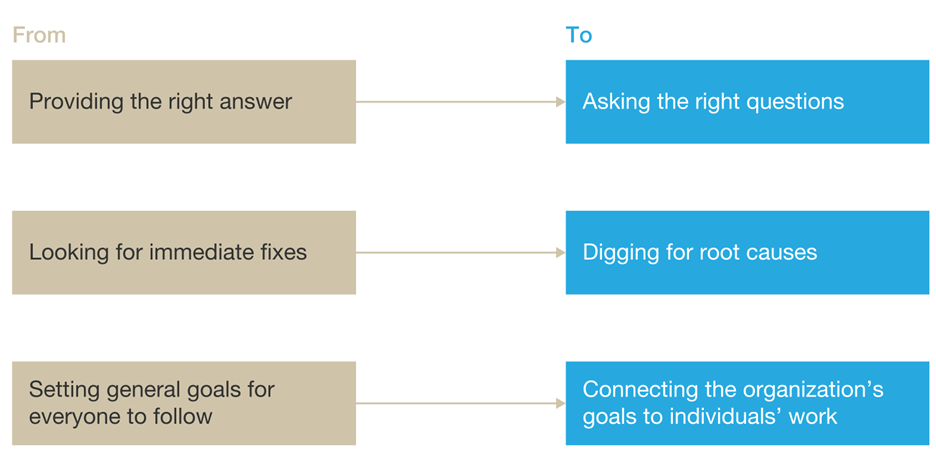When an organization decides to implement Lean, the starting place is usually with a few processes. It is assumed that the ‘right’ behavior will just fall in line as processes are implemented. Organizations that focus primarily on process and minimize or ignore behavior end up facing various obstacles and realize that culture and leadership behavior can make or break a Lean initiative. Do any of these sound familiar?
- “I don’t have time to record on a daily management board.”
- “The problem-solving board takes too much time.”
- “We don’t have time for a Kaizen, I need everyone working to meet customer shipment requirements.”
- “The standard work is unreasonable, it takes too long to get the line started up.”
Leaders will need to learn about Lean and the components. They also need to know what to do differently to ensure success for themselves and the organization. If a leader has been with the organization for a decade or more, they likely have years of old habits to unlearn. A Lean system needs strong “Lean management” to implement and sustain, to ensure there is a focus on the process and the results.
A common mistake is assuming if you design the right process, it should always run as designed and produce consistent results. But the real world, isn’t that idealistic. The more complex the process, the more attention and adjustment is needed as you implement and run Lean processes. Leadership behaviors need to be aligned to ensure attention and iteration. Because without it, an organization risks loosing the Lean momentum that was the crucial reason for the change in the first place.
Often leaders are rewarded by the organization (recognition, advancement, and feedback) by knowing the right answer, fixing a problem immediately, and dictating tasks to complete. This behavior and approach is often associated with being a hero or a firefighter. The organization can count on that leader to solve a crisis and keep things moving forward. But McKinsey points out that there needs to be a fundamental shift to asking questions, finding root cause, and connecting tasks to organization purpose.

A shift from the left to the right, isn’t easy. The behaviors on the right require a leader to trade in the superman cap or firehose, a role that has been reinforced, rewarded, and provides an adrenaline rush. Leaders have to develop new skills to engage the workforce, know what questions to ask, and champion Lean processes by linking individual work to organization results.
When I designed Lean Leadership development programs it focused on behaviors that would be needed to support Lean processes as they rolled out. It wasn’t a gradual shift, there was no nudging. It was a series of skills/behavior training that were aligned with the roll out of specific Lean processes. For example, when visual management boards were rolled out, leaders were also trained that every interaction with an employee had a personal and practical need. Leaders learned how to listen when an employee was resistant to the visual management board and to “hear” the practical need (understand, adjust expectations, etc.) and the personal need (heard, understood, respected, etc.). Leaders were learning the new behaviors right along with the new Lean process.
If your organization is struggling to sustain Lean efforts, it might be time to step back, and be a behavior detective. What behaviors are rewarded? Are those the right behaviors to reward? What skills or behaviors do leaders need to do differently to maximize Lean efforts?
 Becky Andree
Becky Andree
MLC Board Member
CEO of Vertical Leadership Consulting
Learn more about advancing lean leadership.